 How to build a cafe racer
How to build a cafe racer
As a designer with a passion for automotive aesthetics, I’ve always been captivated by the art of motorcycle design, particularly the distinctive style of Cafe Bikes. Much like crafting the sleek lines of a car, designing a cafe bike is about harmonizing form and function to create something visually compelling and inherently desirable. While design work often involves navigating constraints and parameters to achieve the best possible outcome, the beauty of customizing a cafe bike lies in the creative freedom it offers.
These principles aren’t rigid rules, but rather guidelines—a framework to inspire and direct your creative process. Building a cafe bike is a blend of artistic vision and engineering know-how. Each cafe bike reflects a unique personality, influenced by its era, the builder’s taste, and the surrounding environment. Yet, by understanding and applying fundamental design principles, you can ensure your cafe bike achieves a cohesive, professional, and undeniably stylish aesthetic.
My fascination with motorcycle design spans years, culminating in the creation of my own cafe racer. The insights shared here are born from that hands-on experience and observation. I hope these guidelines encourage fellow builders to delve into the aesthetics of their projects and craft cafe bikes that are not only mechanically sound but also visually stunning.
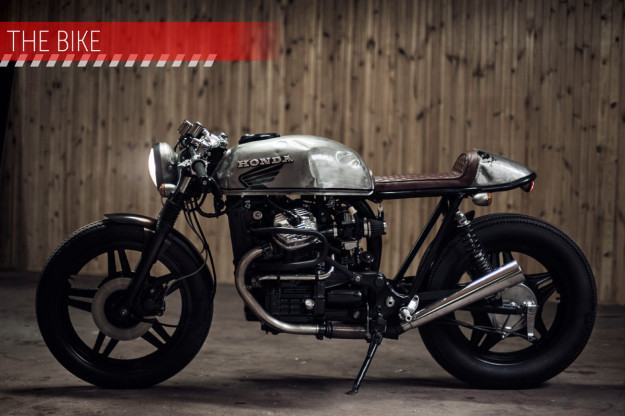 How to build a cafe racer
How to build a cafe racer
To illustrate these points, we’ll reference the striking 2014 Bike EXIF calendar cover bike: Mateusz Stankiewicz’s Honda CX500, a brilliant collaboration with Eastern Spirit garage. This cafe bike embodies many of the design principles we’ll explore.
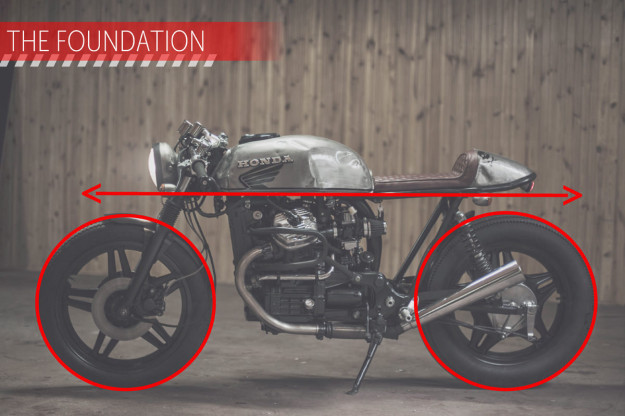 2-how-to-build-a-cafe-racer
2-how-to-build-a-cafe-racer
THE FOUNDATION: Establishing the Horizontal Line
The foundation line is arguably the most crucial element in cafe bike design. It dictates the overall structure, direction, and visual harmony that defines a true cafe racer. This foundation is essentially a flat, horizontal line extending from the front to the rear of the bike. This unbroken line lends an assertive, streamlined appearance, conveying both strength and speed, core tenets of the cafe racer aesthetic. Ideally, this line should flow uninterrupted, creating a sense of visual continuity. While deviations can be successful (as seen in Wrenchmonkees’ Laverda 750), maintaining an unbroken line generally yields a cleaner, more classic cafe bike silhouette.
This foundational line is the first visual cue our brain registers, guiding our eye along the bike’s length. Disruptions or kinks in this line create visual discomfort, much like bumps on a smooth road disrupt a ride. This strong horizontal base rests above two wheels that are visually balanced in size, contributing to the overall stability and proportion of the cafe bike.
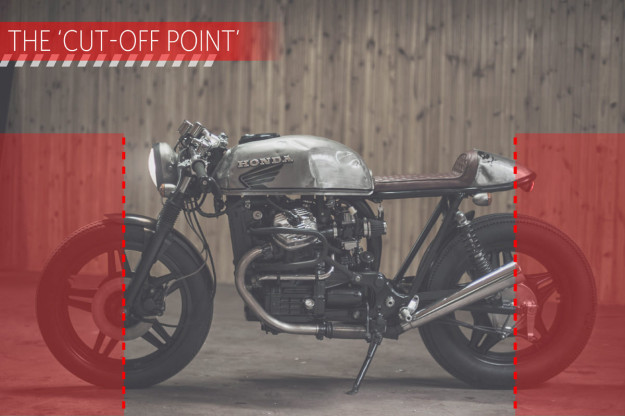 3-how-to-build-a-cafe-racer
3-how-to-build-a-cafe-racer
THE ‘CUT-OFF POINTS’: Defining Front and Rear Limits
These lines are vertical planes originating from the centers of the wheels. They act as visual boundaries for your cafe bike design. Extending elements significantly beyond these cut-off points can disrupt the bike’s visual balance and make it appear disproportionate. Excessive overhang beyond the rear wheel can create a rear-heavy appearance, suggesting poor planning in the design. While a slight rear overhang, as seen in our Honda CX500 example, is often acceptable and even stylish, large rearward extensions should be carefully considered.
If you do opt for a more extended tail section, minimize the visual depth of the seat or cowl to compensate. A bulky cowl protruding excessively beyond the rear wheel can detract from the sleekness of a cafe bike. The front cut-off point is less critical, but front fenders trimmed to align with this line generally contribute to a cleaner, more purposeful look.
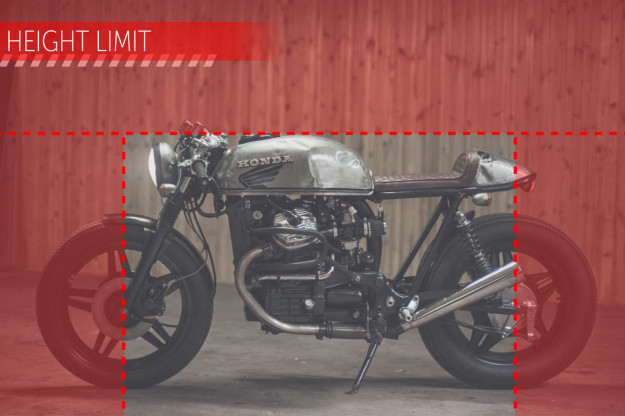 4-how-to-build-a-cafe-racer
4-how-to-build-a-cafe-racer
HEIGHT LIMIT: Maintaining a Low Profile
The height limit is as vital as the cut-off points in achieving a cohesive cafe bike design. This limit is defined by the highest point of the fuel tank. Elements that significantly exceed this height can detract from the streamlined, low-slung aesthetic characteristic of cafe racers. Raising the profile too much can shift the bike’s visual style away from a cafe bike and towards a tracker or scrambler. Maintaining a low and clean profile above the tank reinforces the cafe bike’s sleek and speedy visual identity.
Combined with the front and rear cut-off points, this imaginary box—defined by the cut-off points and height limit—should contain the major visual components of your cafe bike design, creating a sense of visual containment and purpose.
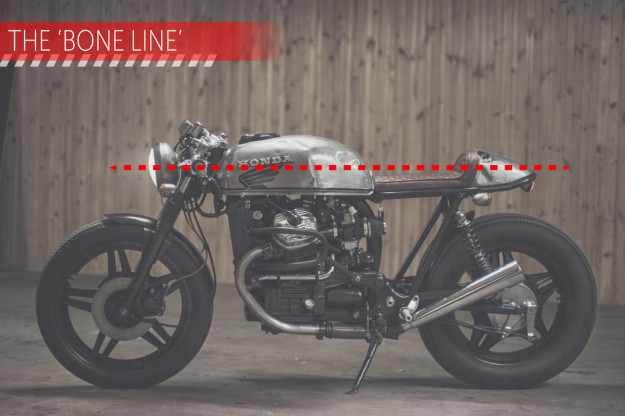 5-how-to-build-a-cafe-racer
5-how-to-build-a-cafe-racer
THE ‘BONE LINE’: Defining the Widest Point
The ‘bone line’ is a concept borrowed from car design that’s equally crucial in cafe bike aesthetics. It denotes the widest horizontal point of the bike’s bodywork. This line is where reflections on surfaces like the seat, tank, and headlight will naturally fall. Think of the bone line as the three-dimensional counterpart to the two-dimensional foundation line. They work in tandem to establish the bike’s visual structure. In our Honda CX500 example, the center of the headlight aligns perfectly with the bone line – a design choice that effectively unifies the upper portion of the bike.
Getting the bone line right is paramount. It immediately creates a sense of visual unity, making the cafe bike appear deliberately designed rather than a collection of disparate parts. When admiring a bike (or car) with appealing aesthetics, take a moment to identify its central bone line and its placement. While it may be a subconscious perception, the presence and correct placement of the bone line is often what elevates a good cafe bike to a great one, as exemplified by this Honda.
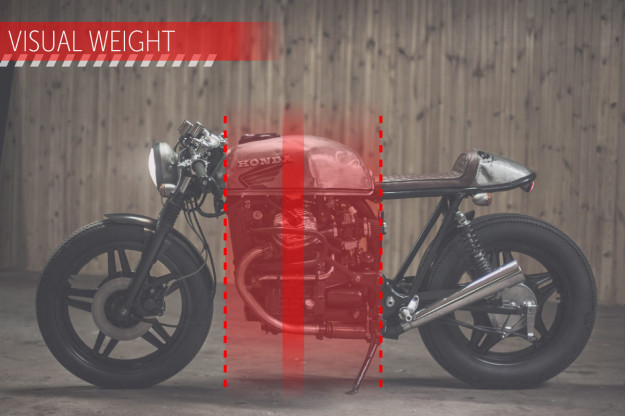 6-how-to-build-a-cafe-racer
6-how-to-build-a-cafe-racer
THE VISUAL WEIGHT: Balancing Mass and Form
Visual weight refers to the perceived mass of the cafe bike, and it’s distributed across two key areas. Firstly, the primary mass is concentrated around the engine block – encompassing the cylinders, crankcase, gearbox, and related components forward of the subframe. This engine mass dictates the ideal tank length. A fuel tank that extends significantly beyond this mass can appear disproportionately large and heavy, while a tank that’s too small can make the engine seem oversized and create a bobber-like aesthetic, which is counter to cafe bike styling.
Secondly, and equally important, is the axis of visual weight, typically located in the middle of the engine, or more precisely, through the center of the cylinders and pistons. This axis defines the ideal shape and profile of the fuel tank. The highest point or peak of the tank should ideally align with or closely approach this axis. Incorporating this principle dramatically enhances a cafe bike’s robust and sporty appearance.
This principle applies universally, even to bikes with inclined engine blocks, such as many Hondas, Kawasakis, and Yamahas. The axis of visual weight still runs through the cylinder’s center at its angle. Consequently, these Japanese bikes often look best with fuel tanks that peak towards the front and taper gracefully towards the rider, mirroring the engine’s inclination.
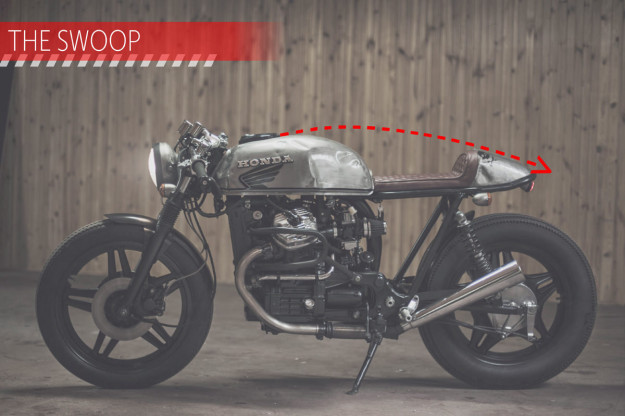 7-how-to-build-a-cafe-racer
7-how-to-build-a-cafe-racer
THE SWOOP: Tank and Seat Integration
The goal is to create a seamless visual connection between the fuel tank and the seat or cowl, making them appear as if they were designed as a unified element. This is achieved by ensuring the curve of the fuel tank flows smoothly into the curve of the seat cowl. This harmonious transition creates the illusion that the tank and seat were once a single piece, sculpted to accommodate the rider. This ‘swoop’ effect imbues the cafe bike with a sense of intentionality and visual tightness, enhancing its overall cohesiveness.
 8-how-to-build-a-cafe-racer
8-how-to-build-a-cafe-racer
PRIMARY ANGLES: Frame and Component Harmony
Often overlooked, the angles of the frame, forks, shocks, and other components can either enhance or detract from a cafe bike’s aesthetic. Conflicting angles can create a chaotic visual ‘spaghetti’ effect, undermining even the most meticulous work. Therefore, consider angle consistency when selecting and integrating new parts. In our featured Honda CX500 cafe bike, a custom subframe was fabricated to refine the original CX500’s somewhat ungainly rear end. Crucially, the builder cleverly matched the angle of the new subframe to the angle of the front forks, resulting in a visually cohesive and integrated design. Angle harmony is a critical consideration in automotive design, and it’s equally important in crafting a visually appealing cafe bike.
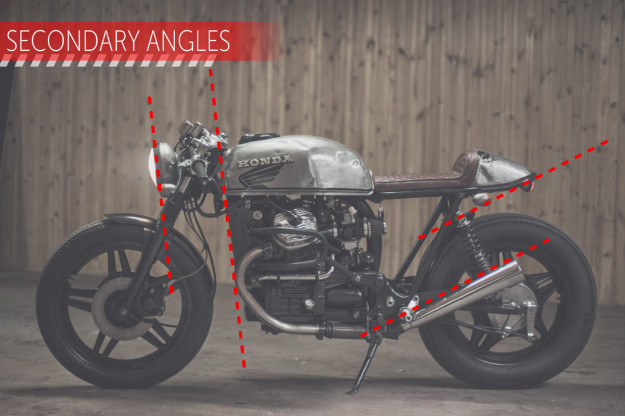 9-how-to-build-a-cafe-racer
9-how-to-build-a-cafe-racer
SECONDARY ANGLES: Subliminal Detail
Even in smaller details, skilled builders often strive for parallels between angles on different components. This level of detail operates on a subliminal level. While you might not consciously notice these subtle angle relationships, your brain registers them, contributing to an overall sense of visual rightness. These secondary angle harmonies add a layer of sophistication to the cafe bike’s design, even if they remain consciously imperceptible to the casual observer.
 10-how-to-build-a-cafe-racer
10-how-to-build-a-cafe-racer
FORK DISTANCE: Achieving an Aggressive Stance
Aim to keep the front wheel visually ‘tucked in’ as much as possible. This creates a ‘pouncing’ and inherently aggressive stance, a hallmark of cafe bike style. While a fork swap might seem like a tempting modification, avoid pushing the front wheel too far forward, which can inadvertently create a chopper-like aesthetic, diluting the cafe bike’s intended look.
I’ve seen cafe bikes that meticulously adhere to these guidelines and achieve stunning results. Conversely, I’ve also encountered cafe bikes that disregard these principles entirely and still manage to look exceptional. These guidelines are intended to provide a solid foundation and help you understand why certain cafe bike designs resonate visually.
Once you are familiar with these fundamental design principles, the choice to adhere to them strictly or to creatively deviate becomes a conscious and informed artistic decision. The key is to understand the rules before you choose to bend or break them in your pursuit of the perfect cafe bike.
46K Shares
